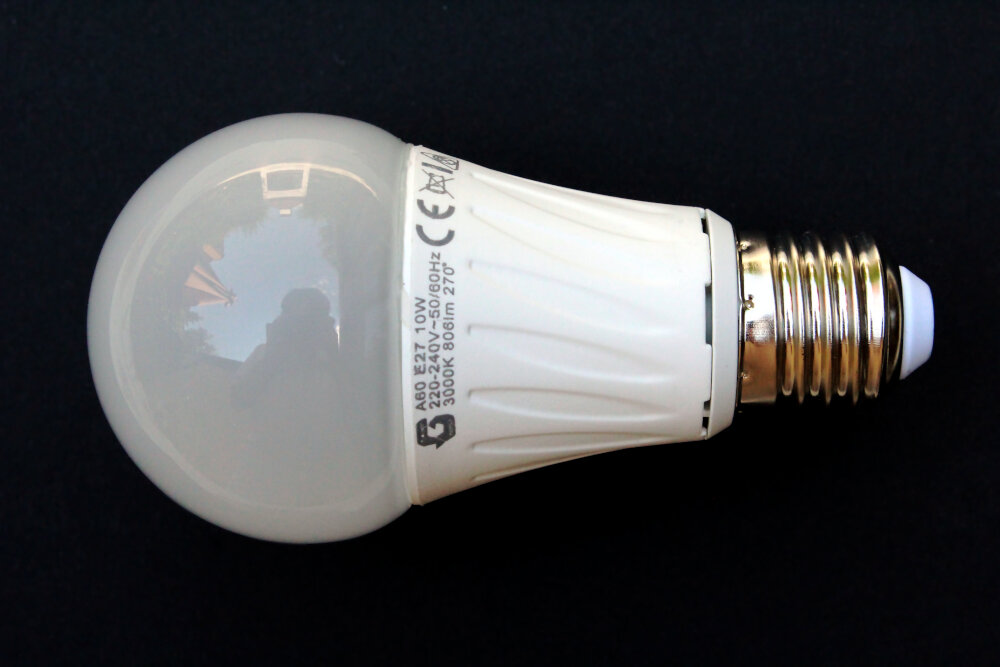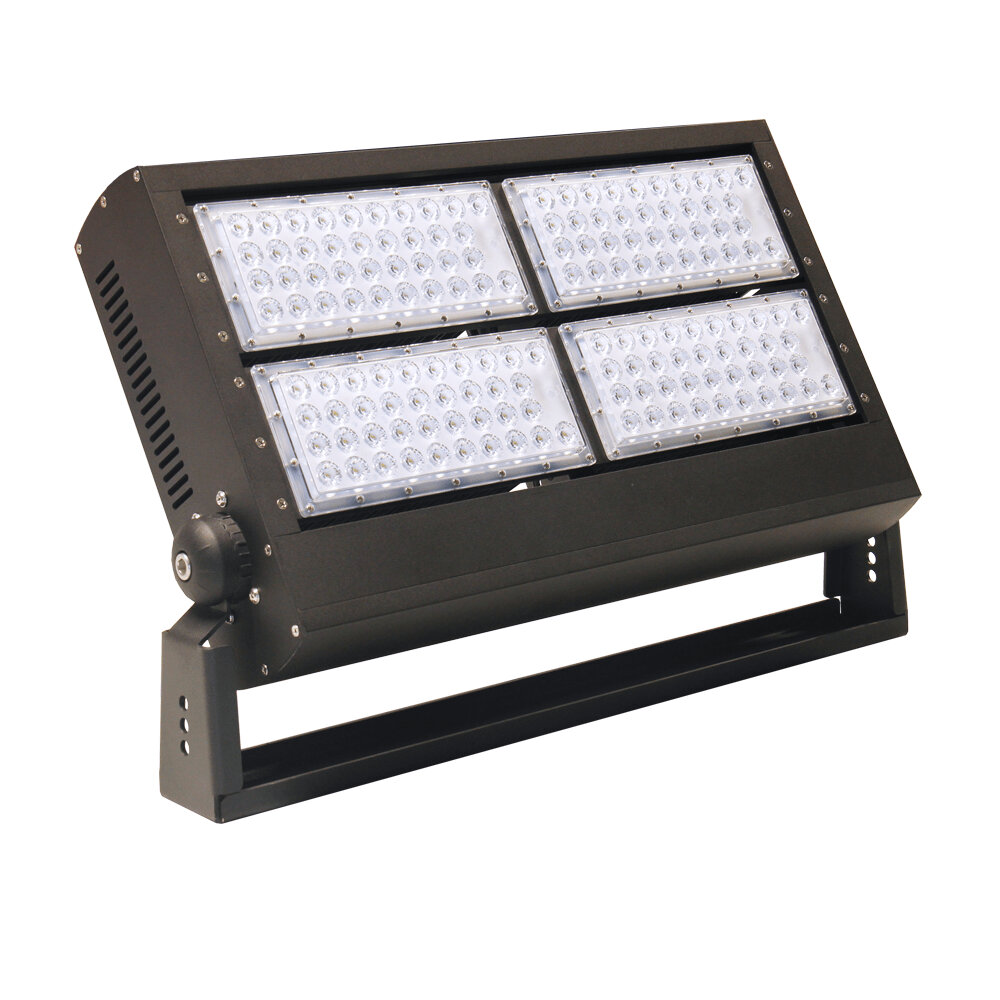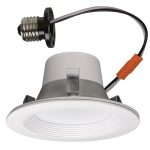Flickering LED Ceiling Lights: Causes, Solutions, and Prevention Tips

Flickering ceiling lights can be a frustrating and annoying issue in any household or office space. Not only do they cause discomfort to the eyes, but they can also affect the overall ambiance of a room. There can be several reasons why your LED ceiling lights are flickering, and it’s essential to identify the root cause to determine the best solution. This article will explore the various causes of flickering LED ceiling lights, provide practical solutions, and offer prevention tips to ensure your lights stay steady and bright. LED lights are becoming increasingly popular due to their energy efficiency, long lifespan, and low maintenance needs. However, they are not immune to flickering, which can be caused by several factors. Some common causes of flickering LED lights include faulty wiring, incompatible dimmer switches, and voltage fluctuations. Flickering can also be caused by overheating or poor installation. Whatever the cause, it’s crucial to address the problem promptly to ensure that your lighting system operates correctly and efficiently. In the following sections, we will explore the various causes of flickering LED ceiling lights and provide practical solutions to help you restore your lighting system to its optimal condition.
LED ceiling lights are a popular lighting option in homes, offices, and other spaces due to their energy efficiency, longevity, and versatility. These lights use light-emitting diodes (LEDs) to produce bright and consistent illumination that can be customized to suit different needs and preferences. LED ceiling lights come in a range of sizes, shapes, and colors, and can be dimmable or non-dimmable, depending on the user’s requirements. However, like any other type of lighting, LED ceiling lights can sometimes experience flickering or other performance issues, which can be caused by various factors such as electrical problems, poor installation, or outdated fixtures. Understanding the causes and solutions of flickering LED ceiling lights can help users prevent and resolve these issues, ensuring that their lighting system remains reliable and efficient.
Flickering LED ceiling lights can be a significant source of annoyance and inconveniences to homeowners, and it is essential to address the problem as soon as it arises. Firstly, flickering can cause eye strain and headaches for people in the room, which can reduce productivity and comfort levels. Secondly, flickering lights can be a sign of an underlying electrical issue, such as loose wiring or a faulty switch, which can pose a safety hazard to the occupants of the building. Lastly, addressing flickering issues can extend the lifespan of LED fixtures, saving homeowners money in the long run on replacement costs. Therefore, it is crucial to identify and resolve flickering issues promptly to ensure the safety, comfort, and efficiency of the home.
Causes of Flickering LED Ceiling Lights

Flickering LED ceiling lights can be a major nuisance and can even cause headaches or eye strain. There are several causes of flickering LED ceiling lights, including voltage fluctuations, incompatible dimmer switches, and faulty wiring. Voltage fluctuations occur when the electrical power supply to the LED lights is not consistent, which can cause the lights to flicker. Incompatible dimmer switches that are not designed for LED lights can also cause flickering, as they may not properly regulate the amount of power being supplied to the lights. Faulty wiring, such as loose connections or inadequate insulation, can also cause flickering in LED ceiling lights. Another cause of flickering LED ceiling lights is electromagnetic interference (EMI). This is when electronic devices, such as microwaves or radios, emit electromagnetic waves that interfere with the power supply to the LED lights, causing them to flicker. Poor quality LED lights or fixtures can also cause flickering, as they may not be able to handle the electrical load required to power the lights. Finally, the age of the LED lights can be a factor in flickering, as older lights may have worn out components that affect their performance. By identifying the cause of flickering LED ceiling lights, homeowners can take steps to prevent or fix the problem, ensuring that their lights provide consistent and reliable illumination.
Voltage fluctuations are a common problem that can cause flickering LED ceiling lights. These fluctuations occur when the voltage supplied to the lights varies above or below the normal range. This can happen due to several reasons, such as overloading of the electrical system, faulty wiring, or the use of multiple appliances at the same time. Voltage fluctuations not only affect the performance of LED lights but can also damage other electrical equipment. Therefore, it is essential to take preventative measures such as installing voltage stabilizers, upgrading electrical systems, and ensuring that the wiring is properly grounded to prevent voltage fluctuations and ensure the longevity of LED ceiling lights.
Incompatible dimmer switches are often the culprit behind flickering LED ceiling lights. When the dimmer switch is not designed to work with LED lights, it can cause issues such as flickering, buzzing or even complete failure. This is because traditional dimmer switches work by reducing the voltage supplied to the light bulb, which is not compatible with LED lights that require a steady flow of electricity. To avoid this issue, it is important to ensure that the dimmer switch is specifically designed for LED lights, and to check the compatibility before installation. Additionally, it is advisable to use high-quality dimmer switches that are compatible with the specific brand and model of LED lights being used.
Loose or faulty connections are one of the most common causes of flickering LED ceiling lights. When the electrical connections between the light fixture and the power source are not secure, the current flow can become unstable, causing the lights to flicker or dim. This can happen due to several reasons, such as a loose wire nut, corroded wire, or a damaged connector. To prevent this issue, it is imperative to make sure that all the electrical connections are tight and secure. One can also consider using high-quality connectors to ensure a stronger and more reliable connection. Regular maintenance and inspection of the electrical components can also help to identify and fix any loose or faulty connections before they cause flickering or other electrical problems.
Overheating is one of the most common problems associated with LED ceiling lights. When the temperature inside the LED light fixture becomes too high, it can cause the light to flicker or even fail altogether. This can be caused by a number of factors, including poor ventilation, improper installation, or using the wrong type of bulb. To prevent overheating, it’s important to ensure that your LED lights are properly installed and that there is adequate ventilation in the area. You may also want to consider using a lower wattage bulb or a bulb with a built-in heat sink to help dissipate heat more effectively. By taking these steps, you can help ensure that your LED ceiling lights stay bright and flicker-free for years to come.
Solutions for Flickering LED Ceiling Lights

Flickering LED ceiling lights can be a nuisance in any home or office, causing eye strain, headaches, and general discomfort. Fortunately, there are several solutions to this problem that can help to eliminate or minimize the issue. One of the most common causes of flickering lights is a faulty dimmer switch. If you have a dimmer switch installed in the room with the flickering lights, it’s possible that the switch is not compatible with the LED bulbs. In this case, replacing the dimmer switch with a compatible one should solve the problem. Another solution is to try a different brand of LED bulb. Not all LED bulbs are created equal, and some may be more prone to flickering than others. Experimenting with different brands and models of bulbs may help to find one that does not flicker. Another solution to flickering LED ceiling lights is to check the wiring of the fixtures. Loose or faulty wiring can cause the lights to flicker or even go out completely. In this case, it may be necessary to call in an electrician to inspect and repair the wiring. It’s also important to ensure that the LED bulbs are installed correctly. If they are not screwed in tightly, they may flicker or not work at all. Additionally, if the bulbs are incompatible with the fixture, this can also cause flickering. Checking the manufacturer’s recommendations for bulb compatibility can help to prevent this issue. By taking these steps, you can effectively eliminate or reduce the flickering of LED ceiling lights, making your home or office a more comfortable and visually pleasing environment.
One of the primary causes of flickering LED ceiling lights is faulty components. These components may include the LED driver or the capacitor. To check and replace these components, it is essential to turn off the power supply and remove the light fixture cover. Using a voltage tester, ensure that there is no electricity flowing through the wires. Then, inspect the components for any signs of damage or wear and tear. If any of the components are found to be faulty, replace them immediately with new ones. It is important to use components that are compatible with the LED ceiling lights to ensure optimal performance and prevent future flickering issues.
If you’re experiencing flickering LED ceiling lights, installing compatible dimmer switches is a crucial step towards resolving the issue. Dimmer switches that are not designed to work with LED lights can cause flickering because they are not compatible with the way LEDs function. Installing a LED-compatible dimmer switch will ensure that the current is regulated properly and the lights will work correctly. Before purchasing a dimmer switch, it’s important to check that it’s specifically designed for LED lights. Once installed, you should see a significant improvement in the performance of your LED ceiling lights, with no more flickering or flashing.
Voltage stabilizers are an essential tool to prevent flickering LED ceiling lights. Voltage fluctuations are the primary cause of flickering lights, and stabilizers act as a buffer to regulate the voltage supply to your LED lights. They ensure that your LED lights receive a steady and constant voltage, thereby eliminating flickering issues. Using voltage stabilizers not only prevents flickering but also extends the lifespan of your LED lights by protecting them from power surges and voltage spikes. It is an inexpensive and easy-to-install solution that can save you from the inconvenience of flickering lights and the cost of frequent replacements. Invest in a good-quality voltage stabilizer to ensure a stable and uninterrupted power supply to your LED lights.
Improving ventilation and cooling can be an effective solution to prevent flickering LED ceiling lights. When the temperature of the room rises, it can lead to heat buildup inside the light fixtures, causing the LED bulbs to flicker. To avoid this, one can install a ventilation system that will keep the air flowing and prevent overheating. Additionally, using a cooling system such as air conditioning or a fan can also help regulate the temperature and prevent flickering lights. Another option is to use LED bulbs that are specifically designed to operate in high-temperature environments. By implementing these measures, one can ensure that their LED ceiling lights stay bright and stable, without any flickering or dimming issues.
Prevention Tips for Flickering LED Ceiling Lights

Flickering LED ceiling lights can be a frustrating issue to deal with, especially if you are sensitive to rapid light changes. Fortunately, there are several prevention tips that can help you avoid this problem altogether. One of the most important prevention tips is to purchase high-quality LED bulbs from reputable manufacturers. Cheaper LED bulbs may be more prone to flickering due to poor quality control during manufacturing. Additionally, it is important to avoid purchasing bulbs that have not been tested and certified by independent testing labs such as UL or ETL. Another prevention tip is to ensure that your LED bulbs are compatible with your existing dimmer switches, if you have them. Not all LED bulbs are compatible with all types of dimmer switches, and using the wrong combination can lead to flickering. To avoid this problem, make sure to select LED bulbs that are specifically labeled as \dimmable\ and verify compatibility with the dimmer switch you plan to use. If you are unsure about compatibility, it is always best to consult with a licensed electrician or lighting professional. Overall, taking a proactive approach to selecting and installing LED bulbs can help you prevent flickering and enjoy consistent, high-quality lighting in your home or office.
Regular maintenance and cleaning of your LED ceiling lights is crucial to ensure their longevity and prevent flickering issues. Dust and debris buildup can obstruct the light’s ability to dissipate heat, leading to overheating and flickering. To prevent this, it’s essential to clean the lights periodically with a soft cloth or brush, and avoid using water or harsh chemicals that can damage the delicate circuitry. Additionally, inspect the wiring connections and replace any loose or damaged wires to prevent short circuits that can cause flickering. By performing regular upkeep and cleaning of your LED ceiling lights, you can prolong their lifespan and enjoy uninterrupted illumination in your home.
Proper installation by a licensed electrician is paramount when it comes to LED ceiling lights. Not only is it important for safety reasons, but it also ensures that the lights function as they should. A licensed electrician has the necessary expertise to install the lights correctly, ensuring that the wiring is connected properly, the right voltage is used, and the right fixtures and fittings are used. By hiring a licensed electrician, you can have peace of mind knowing that your LED ceiling lights are installed properly, and you can avoid problems such as flickering lights or other electrical issues that may arise from improper installation. It’s always better to invest in a licensed electrician who has the knowledge, skills, and experience to handle the job safely and efficiently.
The use of high-quality components and fixtures is crucial for preventing flickering LED ceiling lights. When choosing components for LED lighting systems, it is important to opt for those that are designed specifically for LED technology. This includes LED drivers, which regulate the amount of electricity flowing to the lights, and capacitors, which store and release electrical energy. Using low-quality components can result in voltage fluctuations that cause flickering. Similarly, fixtures that are not designed for LED lights may also cause problems. It is important to choose fixtures that are compatible with LED bulbs and provide adequate ventilation to prevent overheating. By investing in high-quality components and fixtures, you can ensure that your LED ceiling lights operate reliably and without flickering.
Overloading circuits can be a common cause of flickering LED ceiling lights. When too many electrical devices are connected to a single circuit, it can exceed its capacity and cause voltage fluctuations, leading to flickering lights. This can be a serious safety hazard as it can lead to fire or damage to electrical devices. To prevent overloading circuits, it is important to ensure that the electrical devices in a room are distributed across multiple circuits. Additionally, it is important to avoid using high-wattage appliances on the same circuit as the LED ceiling lights to prevent overloading. By taking these precautionary measures, you can ensure that your LED ceiling lights operate smoothly and safely without flickering.
Flickering LED ceiling lights are a common issue that can be caused by a variety of factors. One of the most common causes is voltage fluctuations which may result from electrical wiring problems or power supply issues. Another cause may be incompatible dimmer switches or the use of low-quality LED bulbs. To prevent flickering, it is crucial to ensure that the electrical wiring and circuitry are in good condition, and to use high-quality LED bulbs that are compatible with your dimmer switch. In addition, installing voltage stabilizers or surge protectors can help regulate voltage and prevent flickering. It is also important to consider the wattage of the LED bulbs and ensure that they are suitable for the fixture. By addressing these factors, you can prevent flickering LED ceiling lights and enjoy a stable and well-lit environment.
Flickering LED ceiling lights may seem like a minor issue, but it can actually be a sign of a more serious underlying problem. It can be caused by a variety of factors, including voltage fluctuations, faulty wiring, or even the light bulb itself. Ignoring this issue can lead to more serious consequences, including permanent damage to your lighting fixtures, increased energy consumption, and even electrical fires. Therefore, it’s crucial to address flickering issues promptly by identifying the root cause and taking appropriate corrective measures. This can include replacing faulty bulbs, upgrading wiring, or installing voltage regulators. By doing so, you can not only ensure the safety of your home but also enjoy a more reliable and energy-efficient lighting system.
Conclusion

In conclusion, flickering LED ceiling lights can be a frustrating and hazardous issue that can be caused by various reasons such as voltage fluctuation, improper installation, and low-quality components. However, there are several solutions available, including replacing incompatible dimmer switches, checking the wiring connections, and using high-quality LED bulbs. Prevention tips such as choosing reliable brands, regular maintenance, and proper installation can also help in avoiding this problem. It is essential to take immediate action when noticing flickering LED lights to prevent any potential risks and ensure a comfortable and safe home environment.




